- Home
- slideshows
- miscellaneous
- A 36-year-old woman just became the first person to swim around Easter Island. It took her 19 hours.
A 36-year-old woman just became the first person to swim around Easter Island. It took her 19 hours.
On Friday morning, Ferguson received the all clear for her big swim.

Ferguson was not alone on the trip: Kayaker John McCarthy helped her stay on course and conserve energy. Another swimmer, Sarah Houston, swam alongside Ferguson when she was tired and served as her designated snack feeder.
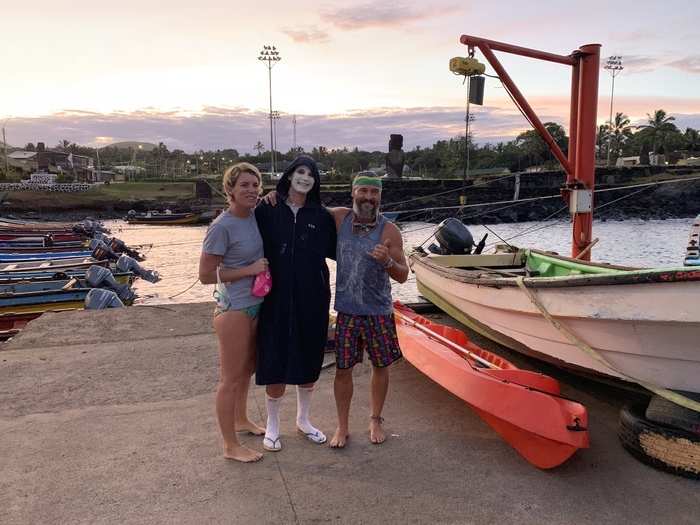
Ferguson said the water around Easter Island is about 20 degrees Celsius (68 degrees Fahrenheit). That's about 5 degrees Celsius (9 degrees Fahrenheit) colder than the temperature she's used along the shores of South Africa.
Easter Island, or Rapa Nui, is officially part of Chile.
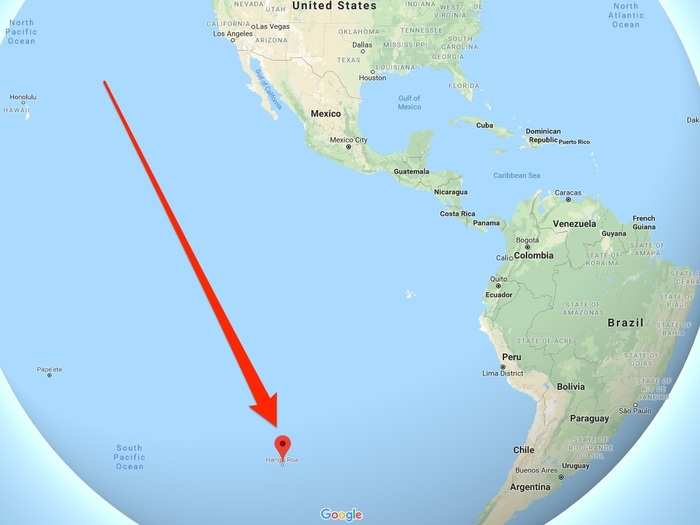
Some native people have even referred to the island, which was created from volcanic activity on the sea floor, as the world's belly button.
It boasts the most remote airport in the world.

Since she didn't know what weather conditions would be like or when the optimal time to start would be, Ferguson planned a 10-day trip to Easter Island. That gave her a wide possible window for the swim. A local hotel sponsored her 10-day stay.
These Moai monoliths have been keeping watch over the island since as far back as the 10th century.
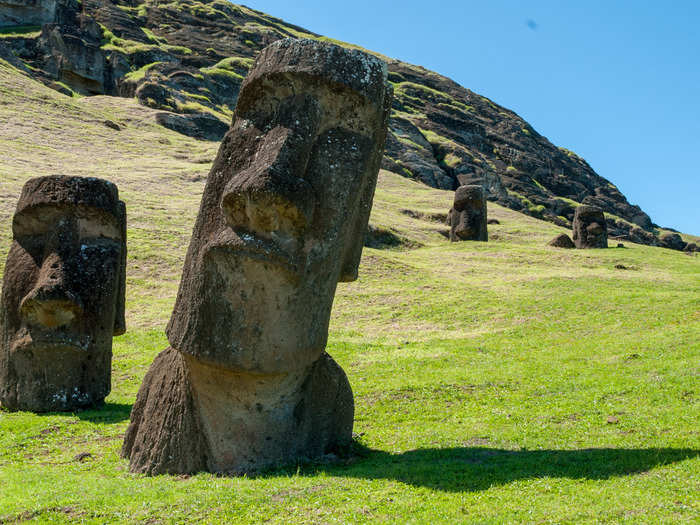
The reason they're there has largely remained a mystery, but scientists discovered something new this year: The statues seem to be strategically placed near sources of fresh water, including coastal freshwater seeps. The finding suggests that the ancient stony faces may have once served to mark unique spots on the island where water is less salty and more drinkable.
More recently, the island has become a reluctant home to a troubling amount of the world's trash.
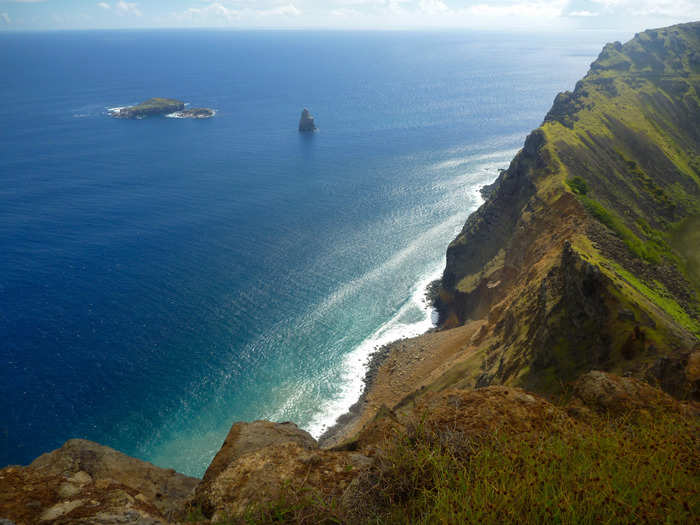
Rapa Nui sits near a swirling vortex of trash in the South Pacific, which is similar to the Great Pacific Garbage Patch, a collection of trash wider than two Texases that bobs somewhere between Hawaii and California.
"The world is trashing the ocean," Easter Island commune mayor Pedro Paoa told PBS Newshour. "And that trash, we are receiving it in our coasts."
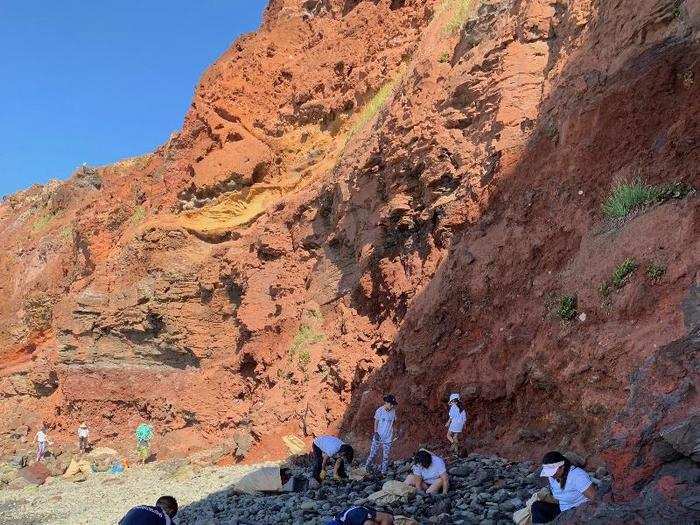
"Most of the plastic that is washed up here is not from here," Ferguson said. "That is the sad and devastating thing on this beautiful, remote island."
The island's tourism boom isn't helping the plastic problem. There's only one dump on Easter Island.

The bulk of the island's 63 square miles is a UNESCO World Heritage site.
Ferguson said she is committed to stopping plastic pollution. "I've always hated litter," she said. "I used to win recycling competitions in primary school."
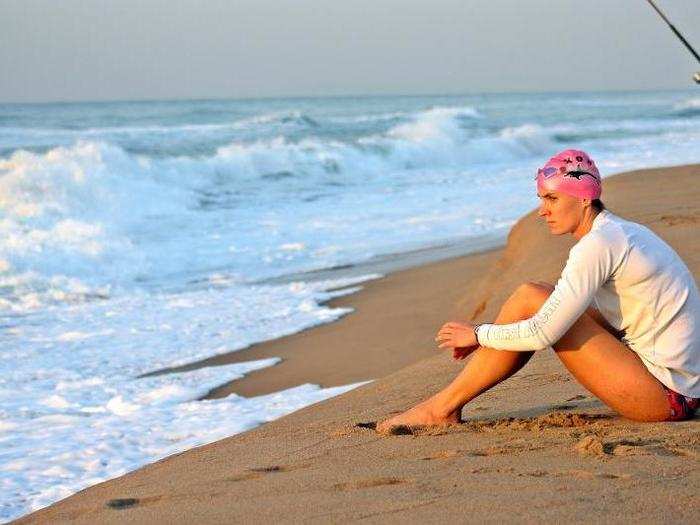
Ferguson's nearly 40-mile swim was funded by Plastic Oceans International, a non-profit that aims to raise awareness about the harmful effects of plastic pollution.
Ferguson hopes her swim might inspire others to discard less at home.
"I get to my goal by doing it one stroke at a time," she said. "With the issue of plastic pollution, it's one decision at a time. Every time you pick up a straw, or every time you refuse a straw, you're making a difference."
Ferguson adhered to the gold standard of competitive English Channel swimming rules. She wore a regular bathing suit, cap, and goggles (no fins) and never touched a boat during the trip.
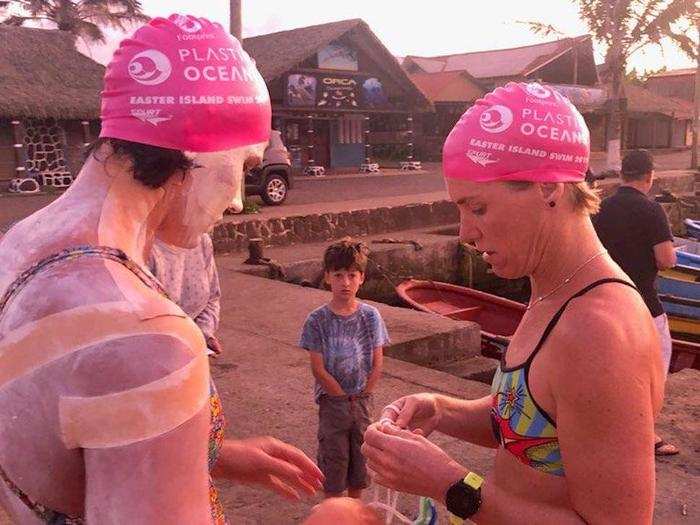
She also started and finished the swim on land.
It was impossible for Ferguson to eat enough on the day of her mission to fully fuel the swim. So she fattened herself up before the trip with some "extra insulation."
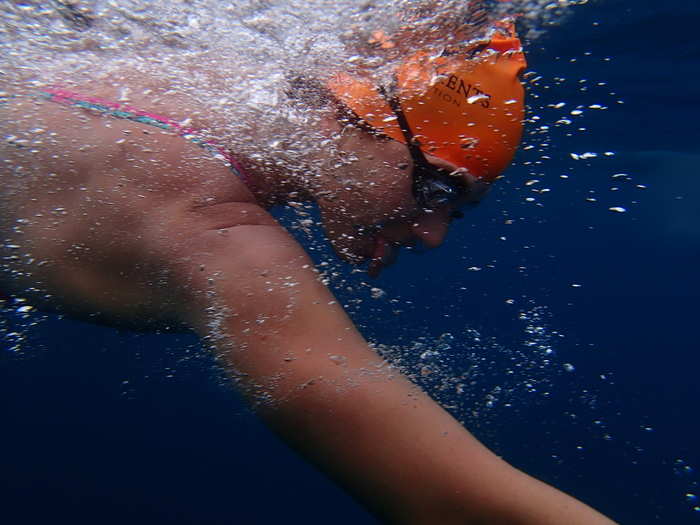
"It's such a long time in the water, you cannot physically eat the amount of food that you need to to sustain that amount of swimming," Ferguson said.
During her training, she burned through about 3,000 calories a day, but tried to eat more than that in order to pile on an extra 5% body fat.
"I will be drawing into some extra reserves," she said. "The more I have on me, the better."
Ferguson stopped every half hour for a snack along the way. Her swimming buddy, Houston, fed her so she wouldn't break any rules about touching a boat.
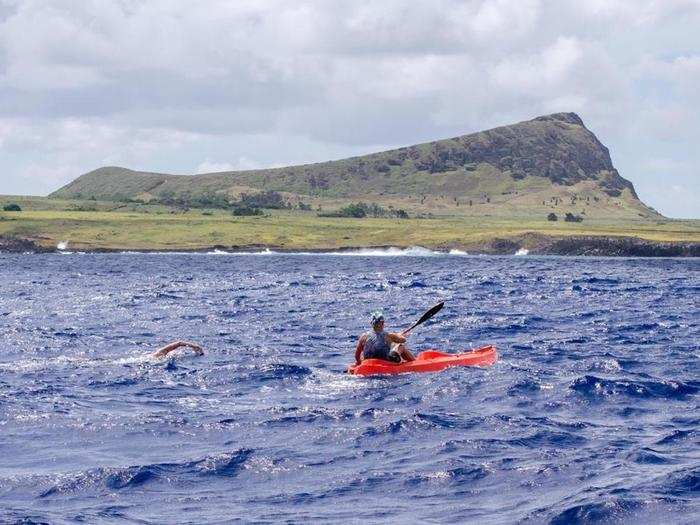
Her favorite snack, she said, was an old standby: canned peaches. She ate four tins of them during the 19-hour swim.
Other snacks included: chicken soup, avocado toast, chocolate, nougat, peanut-butter balls, dried fruit, bananas, oranges, yogurt, juice, and chocolate milk. She also drank some Rooibos tea with milk and honey from her native South Africa.
"I did quite well with my feeding," Ferguson said.
She also gargled some Listerine every hour, which temporarily helped with the intense saltwater.
"That was for me the most uncomfortable part of the whole swim — the saltiness of it," she said.
Ferguson said that when she is out swimming in open waters, her mind will sometimes "switch off," sending her into a meditative "zone out." But because this swim was so salty and difficult, it was a tougher mental challenge.
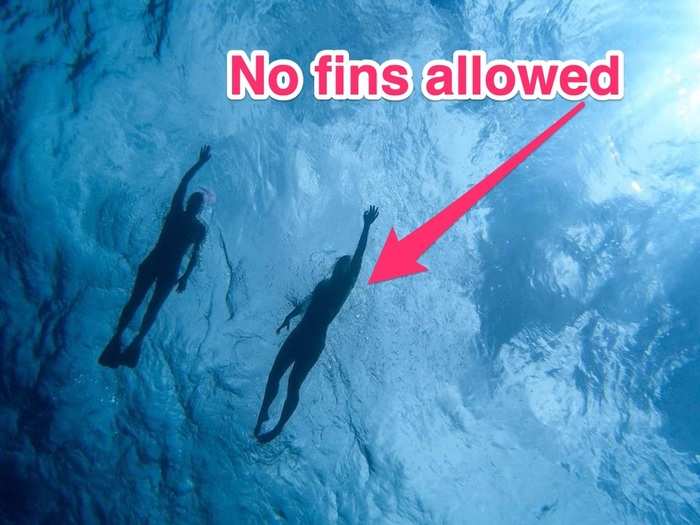
During one particularly tough stretch of the swim, Ferguson said she went through the entire alphabet from A to Z, thinking of people she knew and praying for them to distract herself from the challenge.
"I just thought about them through that stretch," she said.
She also did some addition and sang songs to herself to help pass the time.
"You just have to constantly speak to yourself and constantly distract yourself to try and not think of the end goal, but think of the next feat, or the next challenge you have to face," Ferguson said.
Although Ferguson said she doesn't usually listen to music while she swims, she admitted that there was some AC/DC involved in her journey.

"This pic was taken to the Song of Thunderstruck after rounding the first point," Ferguson told her Instagram followers.
She referred to the tune as a "fueling" song that helps her performance.
"We put that song on, and it'd just bring me to a different level," she said.
Ferguson said she didn't see much sea life on the swim, save for a couple of fish. But there was plenty of plastic in the water.
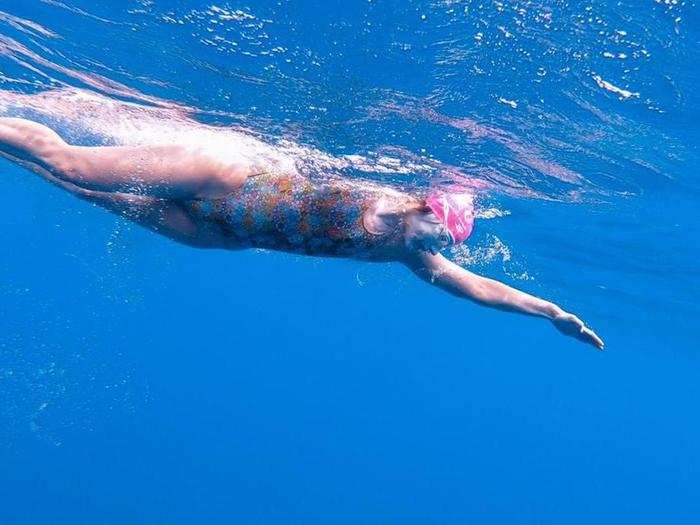
Initially, Ferguson said, she didn't know that what she was seeing in the bright, "blue, blue, blue water" was plastic. It just looked like "little white or yellow string pieces floating."
"But I was told afterwards, the way I described it, that it was microplastics," she said.
Microplastics, when ingested, can hurt or kill marine life, but scientists still aren't yet sure what kind of harm the tiny plastic pieces do to human bodies.
During Ferguson's swim on Saturday, volunteers conducted a plastic cleanup on the island to support her mission.
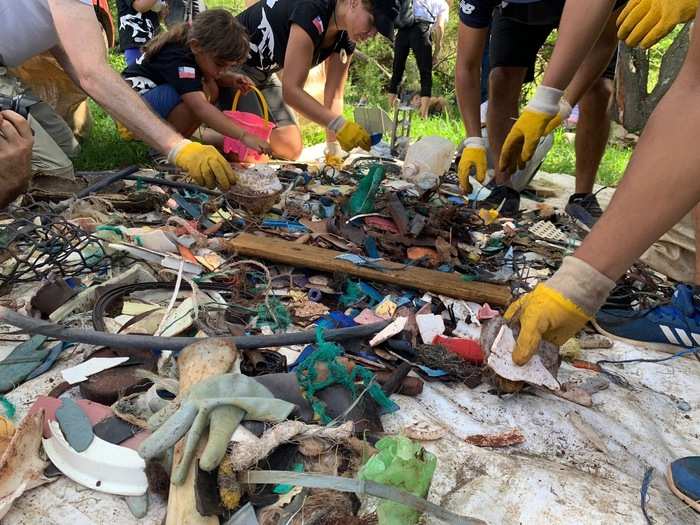
The group gathered over 600 pounds of plastic trash from Viringa o Tuki, a favorite surf spot on Easter Island.
Ferguson swam through the night, and said she enjoyed seeing the stars come out.
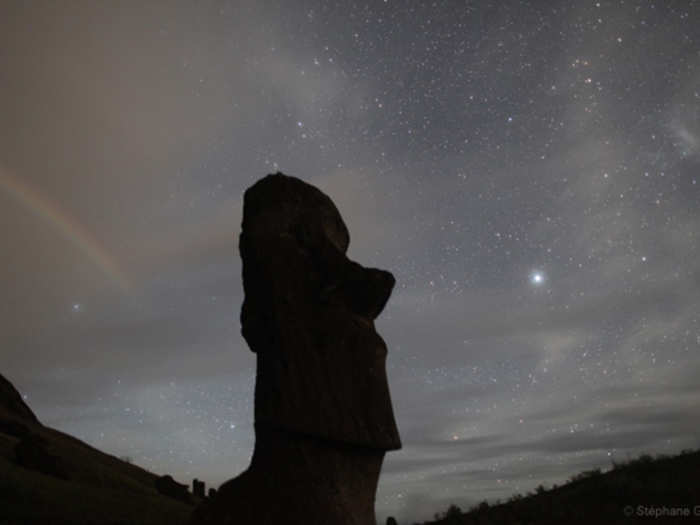
"When I went around each point, I just turned on my back and just absorbed it," she said. "It was really beautiful to just experience being out there in nature in those extreme elements."
But overall, Ferguson said, such moments were rare: "Because of the salt and the discomfort of it, it was hard for me to actually just enjoy it."
Ferguson finished her swim ahead of schedule, getting out of the water five hours earlier than she'd predicted.
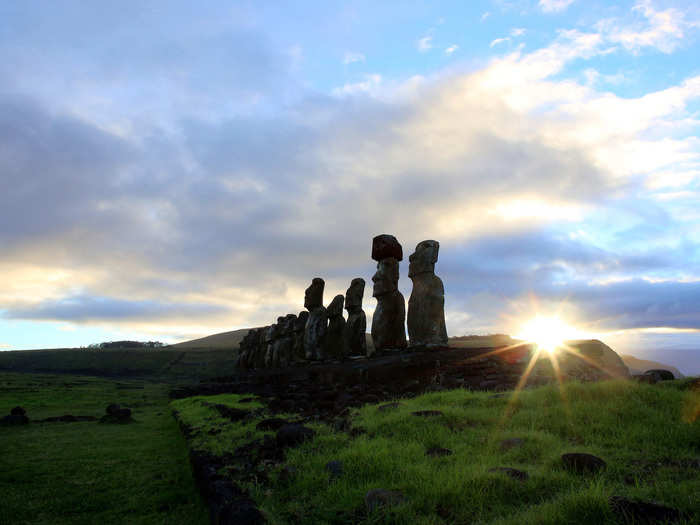
Ferguson said the swim gave her new insight into how easy it can be to ignore the pollution problem.
"It's beautiful and you think, oh, there's not a lot of plastic here," she said of Easter Island's beaches. But "as you uncover the rocks, there is just tons of plastic."
That's why Ferguson says the swim, though challenging, may not be her last attempt to raise awareness about the issue.
"I will do another swim if I have to, to create awareness around this issue, because it is massive," she said. "People think out of sight, out of mind, and it's not like that ... we are all creating it."
Popular Right Now
Popular Keywords
Advertisement